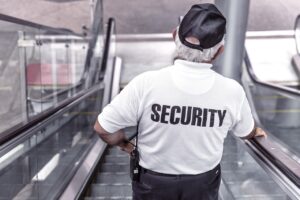Security is an essential aspect of any business or residential property, ensuring the safety of people, assets, and information. Traditional on-site security has been the norm for decades, with physical guards patrolling and monitoring properties. However, this method comes with significant hidden costs that can strain budgets and reduce efficiency. Remote guarding, utilizing advanced technology, offers a modern alternative that addresses many of these hidden costs. This blog delves into the hidden costs of on-site security and presents a compelling case for adopting remote guarding solutions.
The Financial Burden of On-Site Security
Labor Costs
One of the most significant expenses of on-site security is labor costs. Hiring, training, and maintaining a team of security guards can be costly. Salaries, benefits, overtime pay, and the need for around-the-clock coverage add up quickly. For example, an on-site security guard can cost between $25,000 and $50,000 per year per guard, depending on the region and level of experience.

Training and certification are crucial to ensuring security personnel are well-prepared to handle various situations. This involves initial training, ongoing education, and specialty certifications, all of which add to the overall cost. Additionally, turnover in the security industry tends to be high, necessitating frequent retraining of new hires.
Equipment and Uniforms
On-site security guards require uniforms, radios, flashlights, and other equipment to perform their duties effectively. These items need regular maintenance and replacement, adding to the cost. For a large facility, outfitting an entire security team can be a substantial expense.
Liability and Insurance
Employing on-site security guards increases liability risks. Injuries sustained by guards while on duty can lead to workers’ compensation claims, while incidents involving the public can result in lawsuits. Insurance premiums for on-site security are typically higher due to these risks.

Managing a team of security guards requires significant administrative effort. Scheduling, payroll, performance evaluations, and incident reporting are all time-consuming tasks that require dedicated personnel, increasing overhead costs.
Efficiency and Coverage Issues
Human Error and Limitations
Even the most well-trained security guards are susceptible to human error. Fatigue, distractions, and biases can affect performance and response times. Coverage can also be compromised during breaks, shift changes, or absences, creating potential security gaps.
Limited Surveillance Capabilities
On-site guards are limited by their physical presence and field of vision. Monitoring large areas or multiple locations simultaneously is challenging, and blind spots are inevitable. This limitation can reduce the overall effectiveness of the security strategy.
Response Times
While on-site guards can respond quickly to incidents within their immediate vicinity, their response times to incidents occurring in other parts of the property may be delayed. This can be critical in emergency situations where every second counts.
 The Case for Remote Guarding
The Case for Remote Guarding
Remote guarding leverages advanced technology to provide a more efficient and cost-effective security solution. By utilizing AI-powered cameras, motion sensors, and centralized monitoring, remote guarding addresses many of the hidden costs and inefficiencies of on-site security.
Cost-Effectiveness
Remote guarding eliminates the need for continuous staffing, reducing labor costs significantly. A centralized security operations center (SOC) can monitor multiple sites simultaneously, providing 24/7 coverage without the need for multiple shifts or extensive personnel.
Enhanced Surveillance
Advanced technology such as high-definition cameras, motion sensors, and video analytics allows for comprehensive monitoring of large areas with minimal blind spots. These systems can detect anomalies and alert security personnel in real-time, ensuring a rapid response to potential threats.
Scalability
Remote guarding solutions are highly scalable, allowing businesses to adjust their security measures according to changing needs or budgets. Adding new cameras or sensors is straightforward, and the system can be easily expanded to cover additional properties
Reduced Liability
By minimizing the need for on-site personnel, remote guarding reduces the liability associated with physical security incidents. Remote monitoring decreases the risk of injuries, workers’ compensation claims, and allegations of misconduct, leading to lower insurance premiums (BOS Security).
Improved Response Times
With remote guarding, security personnel can monitor live video feeds and respond to incidents in real-time. This centralized approach enables faster decision-making and coordination with local authorities, enhancing overall response times.
Advanced Analytics and Reporting
Remote security systems collect and analyze vast amounts of data, providing valuable insights into security incidents, patterns of activity, and areas of vulnerability. This data-driven approach allows for proactive decision-making and continuous improvement of security protocols.
Conclusion
While traditional on-site security has its merits, the hidden costs and limitations associated with this approach can be significant. Remote guarding offers a modern, efficient, and cost-effective alternative that addresses these challenges. By leveraging advanced technology, remote guarding provides enhanced surveillance, scalability, and improved response times, all while reducing liability and overall costs. As businesses and residential properties continue to prioritize security, the case for remote guarding becomes increasingly compelling.






 The Case for Remote Guarding
The Case for Remote Guarding



